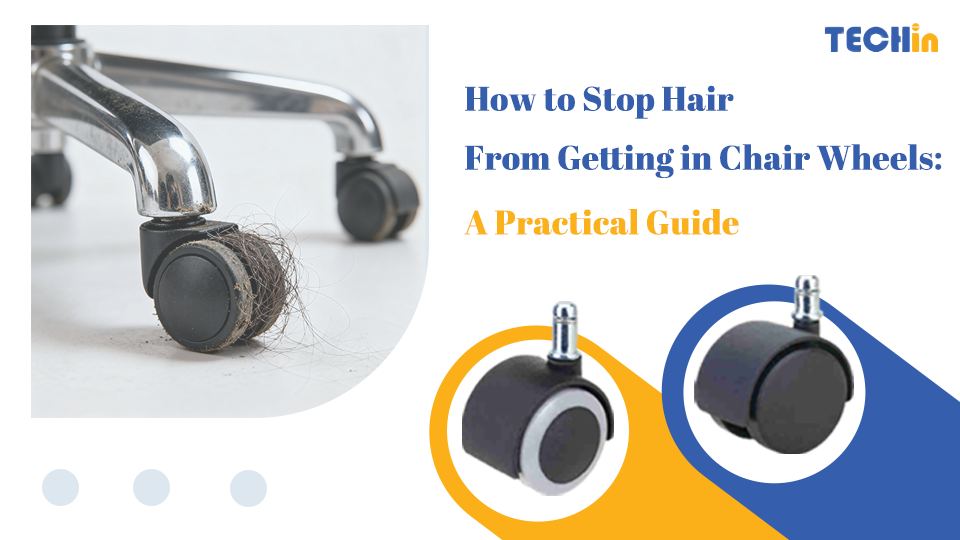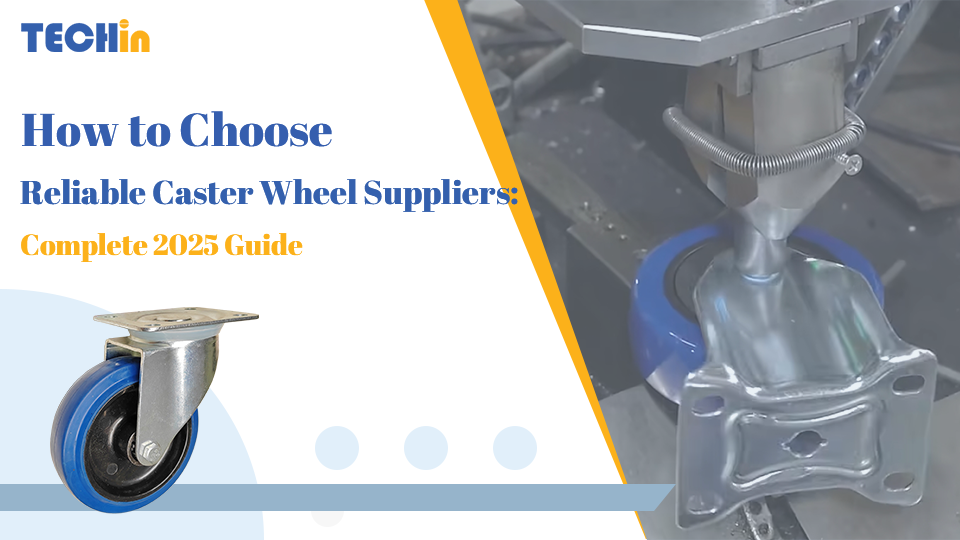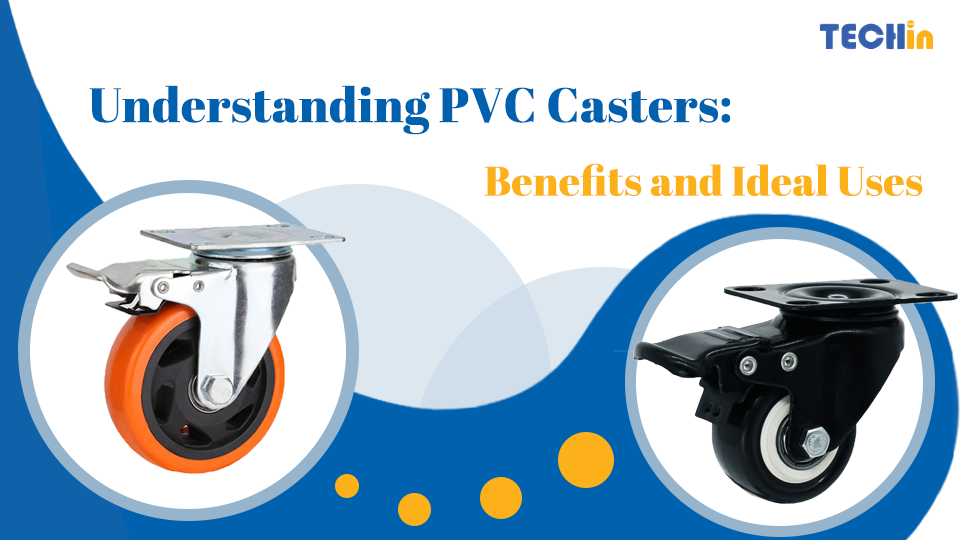Introduction
Ever notice your office chair starts to drag or stutter across the floor? More often than not, the culprit is a buildup of hair, dust, and other debris in the caster wheels. This common issue not only hinders movement but can also cause long-term damage. Fortunately, with a straightforward cleaning process and a few preventative measures, you can keep your chair rolling smoothly and protect your investment
Hair gets caught in chair caster wheels as loose strands on the floor wrap around the axle during rotation. To fix this, you’ll need to clean your floors regularly, remove the wheels to cut away trapped hair, and lubricate the moving parts. For prevention, consider using hair-resistant casters and performing simple monthly maintenance. These steps ensure your wheels roll freely and last longer.
Let’s walk through why hair gets tangled in the first place, the most effective methods for cleaning your casters, and smart solutions to prevent it from happening again.
Why does hair get stuck in chair caster wheels?
Hair becomes trapped in chair caster wheels primarily because of their rotating axle design. As the wheels move across the floor, they pick up loose strands of hair, which are then pulled into the small gap between the wheel and its axle. With each rotation, the hair wraps tighter, creating a spool effect that gradually restricts movement.
This happens for a few key reasons:
- The narrow gap between the wheel and the axle housing acts as a natural trap for fine strands.
- Friction generated by the wheel’s movement pulls the hair deeper into the mechanism.
- Caster wheels made of plastic or rubber can generate static electricity, which attracts dust, hair, and other fibers.
Over time, this tangled mass becomes dense and hard, causing the wheels to drag, roll unevenly, and potentially damage the caster’s internal bearings. In environments with pets, long hair, or high foot traffic, this process accelerates, making regular maintenance essential.
How to get rid of hair on chair caster wheels?
If your chair wheels are already clogged, here are some simple tools and techniques to clear them out:
- Tweezers or Needle-Nose Pliers – Excellent for gripping and pulling out tightly wound hair. Rotate the wheel as you pull to help unravel the strands from the axle.
- Seam Ripper or Safety Pin – A seam ripper is particularly effective for slicing through dense hair clumps without much effort.
- Scissors, Razor, or Box Cutter – Carefully cut across the wrapped hair to break it up, then use tweezers to remove the loose pieces.
- Duct Tape Trick – To remove finer lint and dust, wrap a piece of duct tape sticky-side-out around your finger and press it against the wheel and axle.
- Compressed Air or a Stiff Brush – For a final touch, use a brush or a blast of compressed air to clear away any remaining small debris.
⚠️ Safety tip: When using any sharp tool, be sure to angle the blade away from the wheel’s surface to avoid scratching or damaging the material.
How to clean office chair caster wheels step by step
For a more thorough cleaning that restores your wheels to like-new condition, follow this step-by-step process:
- Remove the Wheels
- Turn the chair upside down or on its side.
- Grip the caster firmly and pull it straight out from the chair base. If it’s tight, you can use a flat-head screwdriver for gentle leverage at the base of the stem.
- Soak in Warm, Soapy Water
- Place the wheels in a bucket with warm water and a small amount of mild dish soap.
- Let them soak for 15–20 minutes to loosen stubborn dirt and hair.
- Cut and Pull Out the Hair
- Using tweezers, scissors, or a seam ripper, carefully remove all the tangled hair from around the axle.
- Scrub and Rinse
- Use an old toothbrush or a small scrub brush to clean any remaining grime from the wheel and housing.
- Rinse each caster thoroughly with clean water.
- Dry and Lubricate
- Allow the wheels to air-dry completely to prevent rust.
- Apply a small amount of lubricant (like silicone spray or WD-40) to the axle and swivel point.
- Reinstall the Wheels
- Push the caster stem back into the socket on the chair base until it clicks securely into place.
This simple routine can significantly improve your chair’s mobility and extend the life of your casters.
Tips to prevent hair from getting in chair caster wheels
Prevention is always more effective than repair. Here are some practical tips to keep your wheels clear:
- Vacuum or sweep floors regularly to minimize the amount of loose hair and debris.
- Choose hair-resistant wheels, which are designed with enclosed axles or smooth surfaces that prevent tangling.
- Use a chair mat, especially on carpeted surfaces, to create a smooth, clean rolling area.
- Inspect wheels monthly and remove any minor hair buildup before it becomes a serious problem.
- Lubricate casters periodically to ensure they spin freely, reducing the friction that can attract debris.
For procurement managers and office administrators, specifying hair-free casters during purchase can reduce maintenance needs and improve user satisfaction across the board.
How to take apart office chair wheels safely?
In some cases, a deep-seated clog may require you to disassemble the wheel itself. Here’s how to do it safely:
- Detach the caster from the chair base.
- Separate the wheel halves. Most standard casters are a two-piece design held together by pressure. You can often pry them apart using a flat-head screwdriver in the seam.
- Remove the axle pin if necessary to gain full access to the interior.
- Clean all components thoroughly before reassembly.
- Snap the wheel back together and reinstall it on the chair, ensuring it feels secure.
⚠️ Important: Always check the manufacturer’s specifications first. Some casters are permanently sealed and are not designed to be taken apart; attempting to force them open can cause them to break.
Summary
Hair-clogged caster wheels are a common but frustrating issue that can impede mobility and damage your chair. By adopting a routine of regular cleaning, implementing preventative strategies, and considering an upgrade to hair-free wheels, you can ensure a smooth roll and extend the lifespan of your casters—a practical solution for both individual users and facility managers.










